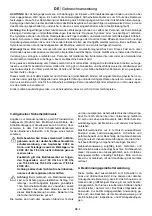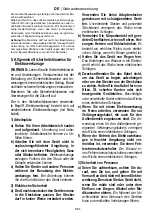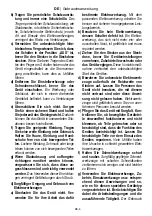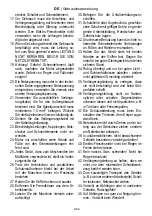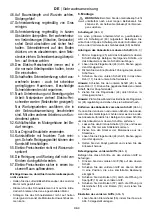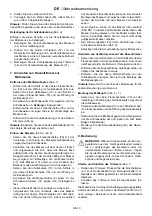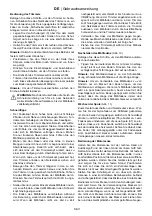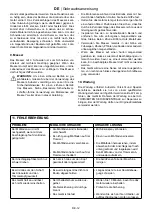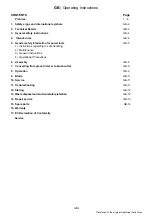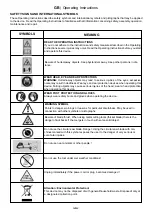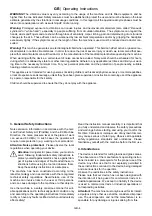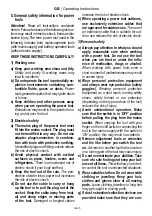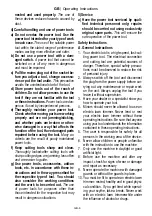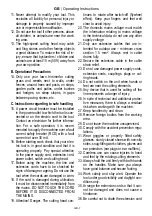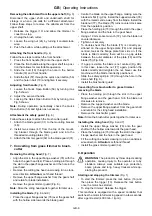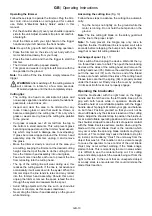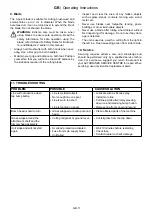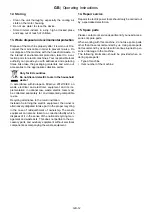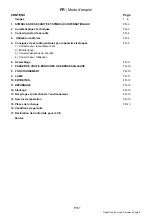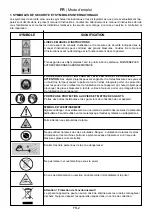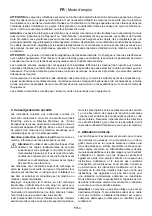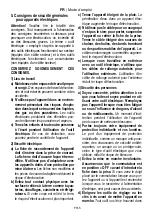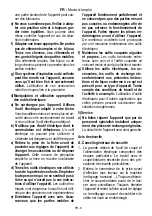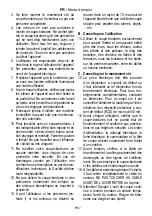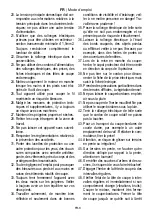
5. General safety information for power
tools
Attention!
Read all instructions contained
herein. Failure to observe the following instruc-
tions may result in electric shock, burns and/or
severe injury. The term ‘power tool’ used in the
following includes both mains-operated tools
(with mains supply) and battery-operated tools
(without mains supply).
KEEP THESE INSTRUCTIONS CAREFULLY!
1) Working area
a) Keep your working area clean and tidy.
Untidy and poorly lit working areas may
lead to accidents.
b) Do not operate the tool in potentially ex-
plosive environments containing com-
bustible fluids, gases or dusts.
Power
tools generate sparks that may ignite dusts
or fumes.
c) Keep children and other persons away
when you are operating the power tool.
Distractions may result in the operator loos-
ing control over the tool.
2) Electrical safety
a) The mains plug of the power tool must
fit into the mains socket. The plug must
not be modified in any way. Do not use
adapter plugs/connectors in combina-
tion with tools with protective earthing.
Unmodified plugs and fitting sockets reduce
the risk of electric shock.
b) Avoid physical contact with earthed
surfaces as pipes, heaters, ovens and
refrigerators.
There is an increased risk of
electric shock if your body earthed.
c) Keep the tool out of the rain.
The pen-
etration of water into a power tool increases
the risk of electric shock.
d) Do not use the cable to carry or hang
up the tool or to pull the plug out of the
socket. Keep the cable away from heat,
oil and sharp edges or moving parts
of the tool.
Damaged or tangled cables
increase the risk of electric shock.
e)
When operating a power tool outdoors,
use exclusively extension cables that
are approved for outdoor-use.
The use of
an extension cable that is suitable for out-
door use reduces the risk of electric shock.
3) Personal safety
a) Always pay attention to what you do and
apply reasonable care when working
with a power tool. Do not use the tool
when you are tired or under the influ
-
ence of medication, drugs or alcohol.
When working with power tools even a
short moment of inattentiveness may result
in severe injury.
b) Wear personal protection equipment
and always wear eye protection (safety
goggles).
Wearing personal protection
equipment as a dust mask, nonslip safety
shoes, safety helmet or ear protectors
(depending on the type and use of the tool)
reduces the risk of injury.
c) Avoid unintentional operation. Make
sure that the switch is in ‘OFF’ position
before pulling the plug from the mains
socket.
When carrying the tool with your
finger on the on/off switch or connecting the
tool to the mains supply with the switch in
‘ON’ position, this may result in accidents.
d) Remove adjustment tools or wrenches
and the like before you switch the tool
on.
A wrench or another tool that is inside or
on a turning part of the tool may cause injury.
e) Do not overestimate your abilities. Take
care of a safe footing and keep your bal-
ance at all times.
This will allow you to bet-
ter control the tool in unexpected situations.
f) Wear suitable clothes. Do not wear wide
clothing or jewellery. Keep your hair,
clothes and gloves clear of all moving
parts.
Loose clothing, jewellery or long hair
may get caught in moving parts.
g) If dust extraction/collection devices are
provided make sure that they are con-
GB-5
GB
|
Operating Instructions

